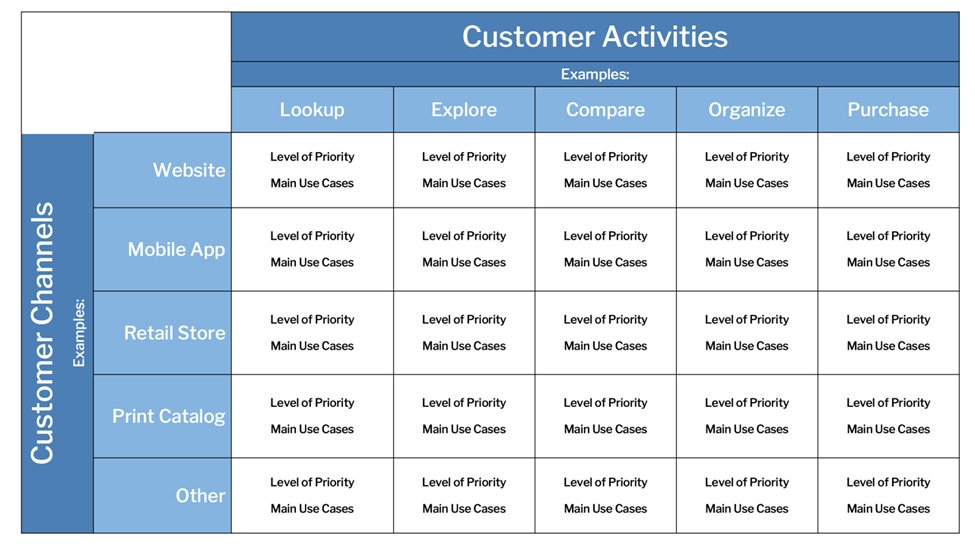
Service Blueprint
Visualize the relationship between customer interactions and your internal processes that support them.

The purpose of a Customer Scenario is to describe how a new product, service, or feature will work through a fictional story about the person actually experiencing it. The Customer Scenario takes place in the future, and brings to life the benefits of new concepts and features in a clear and compelling way. Final scenarios can be produced through sketches, storyboards, mock-ups, and videos but need a great script to start with. The best Customer Scenario scripts feature people acting in a natural way, showcase the most important features and benefits, and dramatize the future state in a way that is appealing. This framework helps you to create a script that aligns customer needs, key features, and business goals.
How could this concept or feature come to life for a customer?
McKee, R. “Story: Style, Structure, Substance, and the Principles of Screenwriting”, Harper Collins, 1997

Visualize the relationship between customer interactions and your internal processes that support them.

Identify the level of importance and the specific roles that different channels play for your customer at each phase of their journey.
This is a project from Kickframe – a digital marketing strategy consulting and training company.